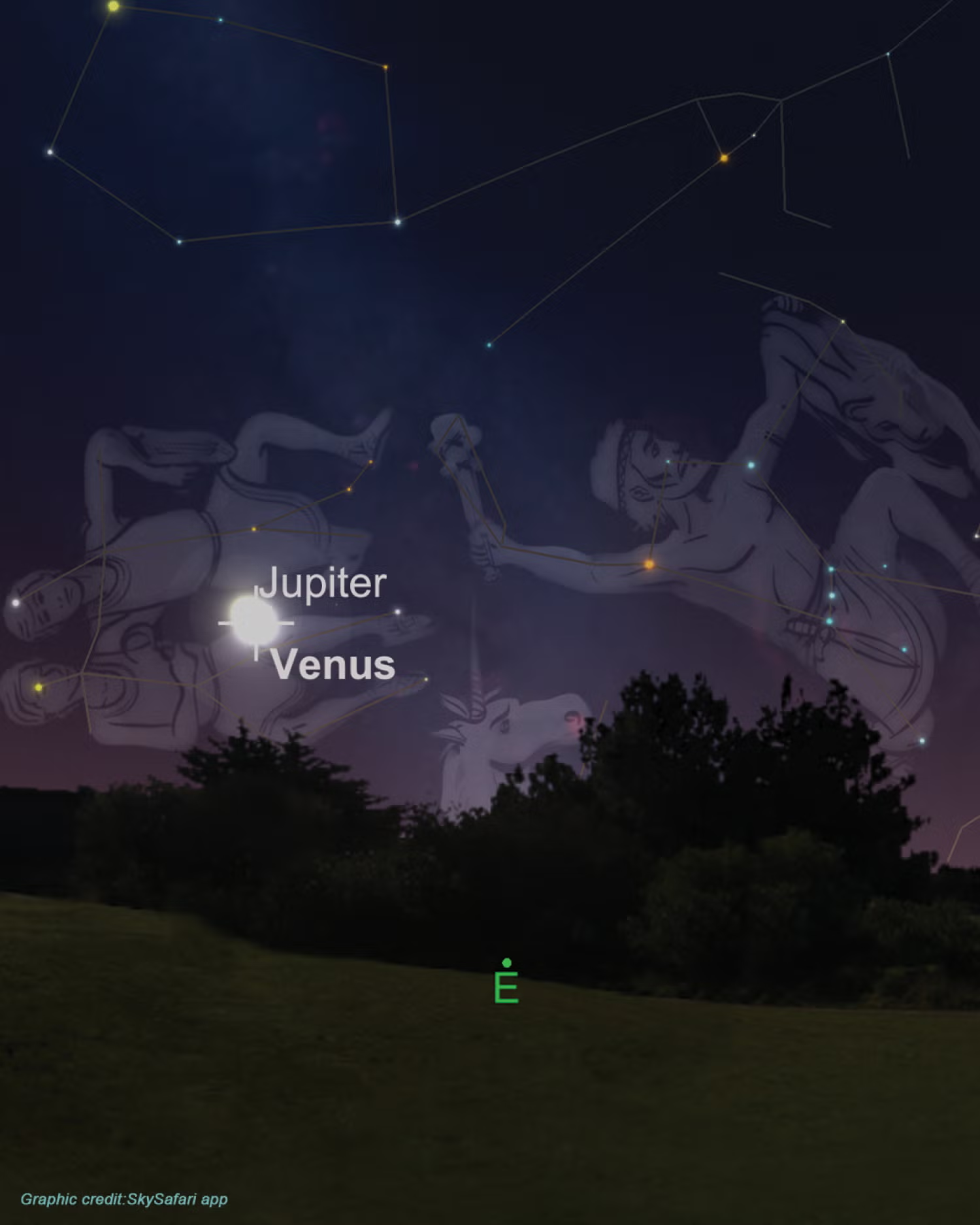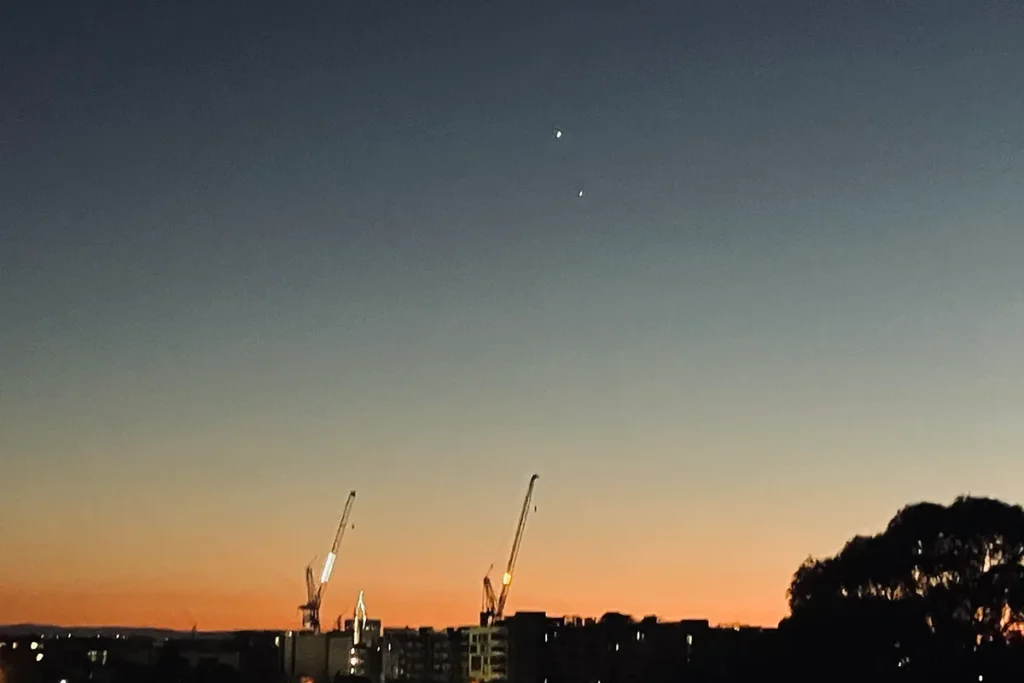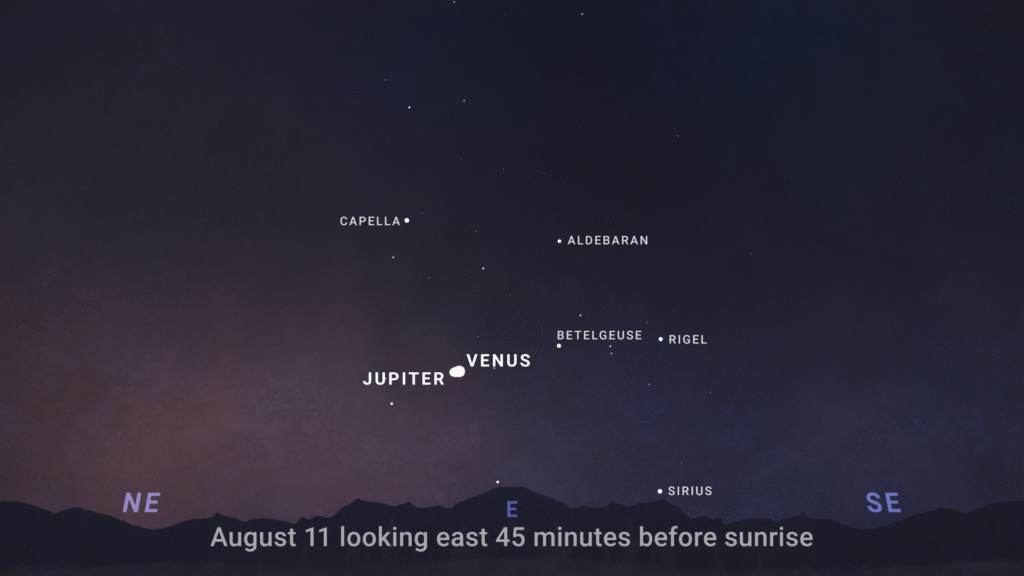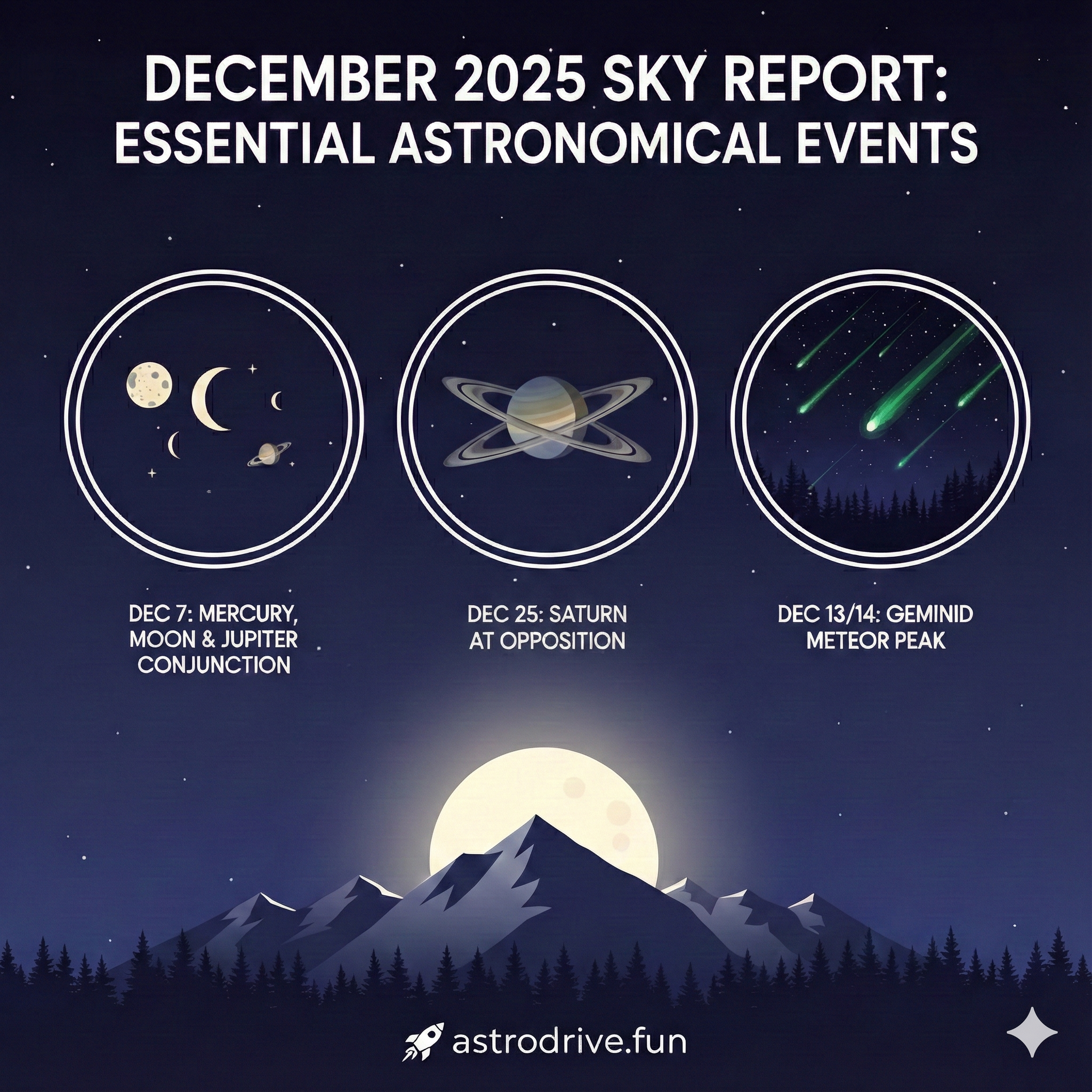“Don’t Sleep on the Night of August 12 – Witness Venus and Saturn Side by Side in the Sky!”


A Stargazer’s Dream: August 12, 2025 — Meteor Showers & Planetary Pairing
This August brings a celestial double feature that’s too stunning to miss. Picture this: as dawn breaks, the sky will unfold two extraordinary events in close succession—a dazzling meteor shower followed by a rare planetary union.
Early Morning Magic: Venus & Jupiter Come Together
From the pre-dawn eastern horizon, two of the brightest planets—Venus and Jupiter—will appear side by side, separated by less than one degree—about the width of a pinky at arm’s length NASA ScienceSpace.
- Visibility: Best observed around 4 a.m. local time, roughly 7° above the eastern horizon Astronomy Magazine.
- Brilliance: Venus shines at magnitude –4.0, while Jupiter holds firm at around –1.9 Space.
- Details through optics: With binoculars or a small telescope, you can see Venus’s 13-arcsecond crescent and Jupiter’s 33-arcsecond disk, along with its Galilean moons—framed together for a breathtaking view Astronomy Magazine.

The Perseid Show: Shooting Stars Under Moonlight
At the same time, the legendary Perseid meteor shower peaks—offering up to a dozen meteors per hour, despite interference from a nearly full Moon Astronomy MagazineNASA Science.
- Peak viewing: Starting before dawn, with notable activity spreading across the early hours Astronomy Magazine.
- Best location: Look northeast toward Perseus, where these meteors radiate.
A Rare Gemini Sky Ballet
Both of these grand spectacles—meteors streaking across the sky and planets dancing in close embrace—happen in the constellation Gemini, with Castor and Pollux serving as familiar landmarks Astronomy MagazineNASA Science.
This is what stargazers call a “planet parade,” a rare alignment that includes Mercury, Venus, Jupiter, Saturn, and others throughout the month Teen VogueTime and DateAstronomy Magazine.
Why This Night Is Unforgettable
Visuals to look forward to:
- Swift meteor fireballs tracing arcs across the sky.
- The faint crescent of Venus glowing next to the bright majesty of Jupiter—with Jupiter’s moons floating nearby.
- A seamless cosmic blend of star, planet, and meteor.
Why it’s rare:
- Venus and Jupiter will reach an unusually tight conjunction—unmissable even for beginners Sky at Night MagazineSpace.
- A major meteor shower peaking at the same time magnifies the drama.
- All this while multiple planets line up near the horizon.
Viewing Tips for a Night to Remember
- Time it right: Head outside about 45 minutes to an hour before sunrise—around 4 a.m. depending on local time.
- Choose your spot: A flat, dark eastern horizon with minimal light pollution brings out the best views.
- Eyes first: Both planets are visible to the naked eye. A phone camera or binoculars helps capture richer details—but be sure to stop observing as the Sun comes up to protect your eyes.
- Extend the show: After seeing the Venus-Jupiter pairing, track Saturn and the waning Moon higher later in the pre-dawn hours EarthSky.
August 12, 2025, is a night when the heavens align in spectacular unity. A meteor shower whispers stories in streaks of light, while Venus and Jupiter hold court in a close dance at dawn. It’s a celestial performance you’ll want front-row seats for.



Onabetbetbr? Alright, alright, alright. Gave it a spin, and the variety of bets is pretty extensive. Feels like I can bet on anything, which is both awesome and a little scary, haha. Good luck and have fun! onabetbetbr
Alright, gotta say, jj804 is smooth. The games load fast, and they have a ton of options. Been grinding here for a few days and no complaints so far. Try jj804!
Anyone tried jiliccc? Heard some whispers about it. Worth checking out or just another wanna-be? Share your thoughts, peeps! I’m curious! Explore more: jiliccc
Recently stumbled upon phmobacasino and I’m loving it! Great selection of games and a cool layout. Feels like a legit casino experience on your phone. Worth checking out! Here’s the link: phmobacasino
v88bet… Gave it a gamble! Pretty straightforward betting platform. Nothing too flashy, but it does the job. See if you can win big: v88bet